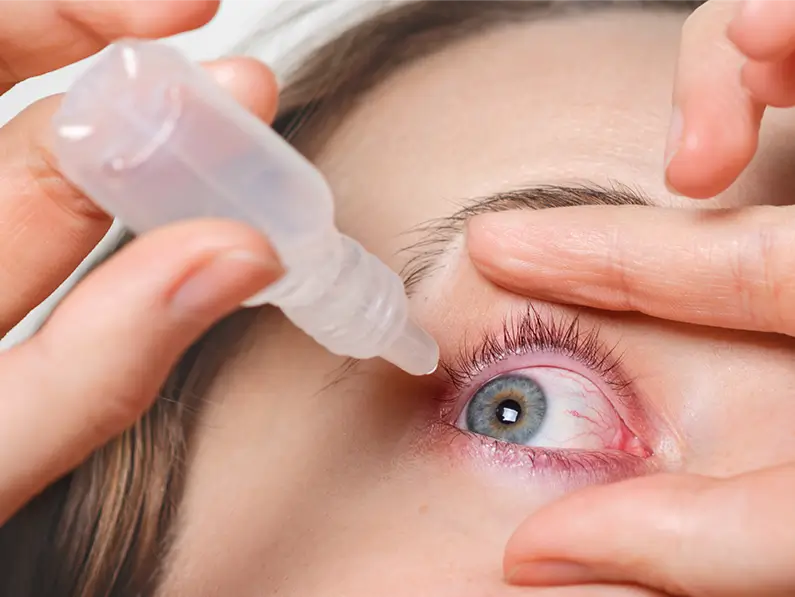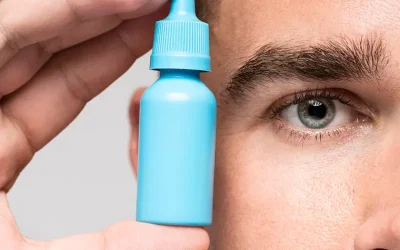For allergy relief, the best eye drops are those formulated with antihistamines – with Zaditor and Alaway leading the pack. These drops deliver immediate comfort by reducing itching and redness, while lubricating eye drops complement them for overall soothing. If you’re tired of red, itchy eyes and need a solution that works fast, you’re in the right place. Continue reading to uncover expert insights, detailed tips, and more recommendations that will keep your eyes clear and comfortable!
Understanding Eye Allergies
Eye allergies, commonly referred to as allergic conjunctivitis, occur when your immune system overreacts to environmental allergens such as pollen, pet dander, or dust mites. This reaction leads to the release of histamines, which cause inflammation and the classic symptoms of red, itchy, and watery eyes.
Symptoms of Eye Allergies
Common symptoms include:
– Itching: An uncontrollable urge to rub your eyes.
– Redness: Inflamed blood vessels giving your eyes a reddish tint.
– Watery Eyes: Excessive tearing as your body attempts to flush out the allergens.
– Swelling: Mild puffiness around the eyes due to inflammation.
Common Causes and Triggers
The triggers behind these symptoms can be both seasonal and year‑round. Outdoor allergens such as pollen often flare up in spring and summer, while indoor irritants like dust and pet dander can cause symptoms at any time. Understanding your triggers is the first step toward managing your symptoms effectively.
The Role of Eye Drops in Allergy Relief
Eye drops serve as a direct remedy by targeting the source of discomfort. They work in several ways: reducing inflammation, blocking histamines, and even washing away allergens from the eye’s surface. Depending on their active ingredients, each type of eye drop offers unique benefits tailored to different symptoms.
Antihistamine Eye Drops
Antihistamine eye drops are often the first choice for many allergy sufferers. They work by blocking histamines—the chemicals responsible for triggering the allergic response—thus offering quick relief from itching and redness. Over-the-counter products like Zaditor and Alaway are popular for their effectiveness and ease of use, ensuring that you can continue your day with minimal interruption.
Lubricating/Artificial Tear Eye Drops
For those experiencing dryness alongside other allergy symptoms, lubricating eye drops, also known as artificial tears, provide a soothing effect. These drops help by moistening the eyes and flushing out allergens, which reduces overall irritation. When used alongside antihistamines, they offer a comprehensive solution to eye allergies.
Decongestant Eye Drops
Decongestant eye drops can temporarily shrink swollen blood vessels and alleviate redness. However, these should be used sparingly as prolonged use may lead to rebound redness. Always consult with a healthcare professional if you are unsure about using decongestants regularly.
Top Eye Drops for Allergy Relief
Choosing the right eye drops depends on the severity of your symptoms and your personal needs. For most, a combination approach works best. Over-the-counter antihistamine eye drops like Zaditor and Alaway are well-regarded for their fast and lasting relief. When paired with lubricating drops, they can address both the immediate symptoms and the dryness that often accompanies eye allergies.
Over-the-Counter (OTC) Options
OTC products are readily available and designed for quick relief. They offer:
– Rapid Action: Most antihistamine drops start working within minutes.
– Convenience: No prescription required, making them easy to access when symptoms arise.
– Dual-Action Formulas: Some products combine antihistamines with lubricants for enhanced comfort.
Recommended OTC Brands
Many users recommend Zaditor and Alaway for their reliability and effectiveness. These brands have earned praise for offering immediate relief without causing drowsiness, making them ideal for daytime use.
Prescription Options
If your symptoms are more severe or persist despite OTC treatments, prescription eye drops might be necessary. These drops generally contain stronger anti-allergic medications such as olopatadine or ketotifen, providing a more robust response to chronic inflammation and severe allergic reactions.
When to Consider Prescription Eye Drops
If over‑the‑counter options only provide temporary relief or if you notice worsening symptoms like intense pain, vision changes, or significant swelling, it’s important to consult an eye care professional. A prescription option may be the best path forward for sustained relief.
Choosing the Best Eye Drops for Your Allergies
Selecting the ideal eye drops involves evaluating several factors:
– Symptom Severity: Mild symptoms might be easily managed with lubricating drops, while more intense reactions typically require antihistamines or prescription treatments.
– Frequency of Use: Consider whether your allergies are seasonal or persistent year‑round.
– Lifestyle Needs: For busy days at work or school, a non‑drowsy formula is essential.
– Budget: While OTC options are generally affordable, severe cases might require the investment in prescription medications.
Tips for Maximizing Effectiveness
Here are a few tips to ensure your eye drops work as intended:
– Keep it Clean: Always wash your hands before applying drops.
– Avoid Contamination: Do not let the dropper touch your eye or any surface.
– Follow Instructions: Adhere to the dosing guidelines on the package or as advised by your doctor.
– Allow Time: Give the drops a few minutes to fully absorb before blinking or rubbing your eyes.
Conclusion
Managing eye allergies doesn’t have to be a struggle. By understanding your symptoms and selecting the right eye drops—especially antihistamine formulas like Zaditor and Alaway—you can achieve rapid relief and maintain clear, comfortable vision. When combined with lubricating drops, these products offer a holistic approach to eye care. Remember, if your symptoms persist or worsen, it’s crucial to consult an eye care professional for tailored advice and treatment options.
FAQ: Your questions answered
Can I use both antihistamine and lubricating eye drops simultaneously?
Yes, using them together can provide enhanced relief by targeting both irritation and dryness. Just follow the recommended wait time between applications.
How soon can I expect relief from antihistamine eye drops?
Most users notice a reduction in symptoms within minutes, although individual responses can vary.
Are there any risks or side effects?
Some users may experience mild stinging or dryness initially. If side effects persist or worsen, consult your doctor.
Do these eye drops cure allergies?
No, they provide symptomatic relief. Managing allergies often requires a combination of avoidance strategies and additional treatments.
When should I consider seeing a doctor about my eye allergies?
If over‑the‑counter treatments do not provide sufficient relief, or if you experience severe symptoms, it’s best to seek professional advice.



